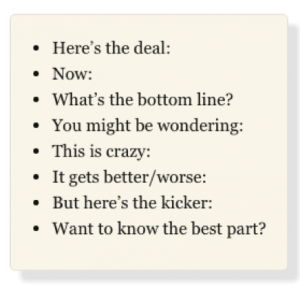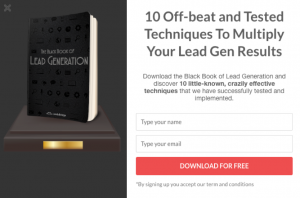It is a known fact that for any business to succeed online, it needs to generate leads. When you generate leads and nurture them, you can turn them into paying customers.

One of the best ways to generate leads and nurture them is by optimizing your blog posts.
This is where creating high-quality blog posts come in.
It will interest you to know that creating blog posts will help you to attract traffic to your website. According to Hubspot, companies that blog generates more traffic than companies that do not.
As you create more blog post on your website, you will get more traffic. As your audience consume your post and derive value from it, they will want to do business with you. It then becomes easy to convert them into paying customers. According to Researchnow, nearly nine in 10 consumers (84%) make purchases after reading about a product or service on a blog. Also, WebDam research revealed that marketers who blog generate 67% more leads than marketers who do not.

Creating blog posts will also establish you as an authority in your market. It makes you the go-to for advice and recommendations on issues that are bothering your target audience. This will help you to build credibility and trust.
Blog posts that are optimized to generate more leads tend to contain specific elements that that push people to take action.
In this article, you’ll learn how to optimize your blog posts for lead generation by working on two major elements. They are:
- What people see
- What people don’t see
1. What people see
There are several elements of your blog posts that are visible to your readers as highlighted below:
Content goals
The first thing you need to do is start with the goal of the blog posts. What do you want the blog post to do for your business? These goals can be to generate traffic, leads, brand awareness, customers, etc.
For instance, in this article, we are talking about how you can optimize your blog posts to generate leads for your business. In this case, you will need to focus on that and avoid linking to products and services that can distract readers.
Avoid external links
Your website is a virtual sales rep and you must do all you can to keep people from leaving without taking desired actions.
Adding external links to your content will take them away from your websites, especially, if the goal of your content is to help you to generate leads.
It is like spending hours cranking out content that will convert visitors to lead only for you to give them someone else’s business card. Sure, you wouldn’t want to do that.
Use short sentences and paragraphs
Long sentences are not always bad, but they can be difficult to comprehend and this will dissuade people from reading your posts.
On the other hand, short sentences make it easy for your audience to read your posts. It is easier on the eyes and it does not take long to read.
One tool that will help you to get used to writing short sentences is the Hemingway app.
It flags long sentences prompting you to cut them short by highlighting them in purple color.
You should strive to make your sentences to be between 14 – 16 14 words long. Anything longer than that is too long.
Likewise, your paragraph should be between 1-3 lines and it should contain only one idea for clarity.
For example, check out this post from smartbloggers.com. Look at the short sentences and paragraphs.
Ask for a like or share
It is much easier to ask people to like or share your blog post than to ask for their contacts. Naturally, if you create positive and valuable content, they will like and share it. According to the researchers at the University of Pennsylvania, they found out that people will share positive content than negative.
However, you can still ask them with a call to action. For example, tweets that ask readers to retweet get 51% more retweet than tweets that never ask.
Use cliffhangers
A cliffhanger is a scene in a movie, book or TV show that holds something back from the audience. The audience will get to see that ‘thing’ at a later time.
It is a strategy to keep you watching.
So how do you use cliffhanger in your content?.
You can use phrases like For example, let me explain, here’s why, case in point, here’s the deal, now: etc. in your content to keep them reading. It will keep your readers coming back for more.
Below are more cliffhangers from Brian Dean of Backlinko. He calls it bucket brigade.

Use banners and links to relevant freebies within the text
You can add banners in between the content and also link to freebies within your texts. Giving freebies to your audience helps them to learn more about you, your product and services. When they know who you are and what you do, they will start trusting you and your brand. This can lead them to do business with you. You can create freebies like free reports, free courses, quizzes and surveys, checklists, white paper and other downloadable resources.
Use pop-ups and Exit intent
Pop-ups and exit intent pop-ups, when used correctly, will help you to generate more leads. Exit intent pop-ups are especially great because they do not in any way interfere with users’ interaction with the website. It pops up as your users move their cursor to leave the browser tab.
Exit intent pop-ups help you to immediately get the attention of your website visitors as they attempt to leave your website.
Below is a sample of an exit pop up from Leadsbridge:

2. What people don’t see
The second aspect of creating content that generates more leads is to pay attention to what people don’t see (i.e. things behind the scene).
Create different articles for SEO and Lead Generation
The fact is your audience is looking for high-quality content. If you satisfy them by creating high-quality content, they will trust you more. This will make it easy to turn them into leads. You can specifically create articles for SEO purposes and for lead generation purposes.
The SEO article will focus on attracting traffic from the search engines. These types of articles include blog posts optimized with your keywords, feature pieces, listicles (i.e. articles such as 5 ways to generate leads), guides, etc.
The lead generation articles will be blog posts that incorporate your products or services.
What you will do here is to link your search engine optimized articles to your lead generation articles. This way, your audience will read, engage with your content and will also be directed to your lead generation articles.
Optimize your website for mobile traffic
Optimizing your website for mobile traffic means ensuring that visitors who come to your website from mobile devices can enjoy reading your blog posts.
If your website is not optimized for mobile traffic, you are missing out. According to a comScore report, mobile traffic has taken over from desktops.
Google officially attested to it in 2015, when it declared that mobile searches are more than desktop.
This implies that if your website is optimized for mobile, you are strategically positioned to generate more traffic to your website.
Install the cookies for remarketing and retargeting
Retargeting, also known as remarketing your website visitors is a way to follow your website visitors as they move around the web.
You do this by installing a retargeting pixel (HTML code) which is a cookie that will be stored on your visitors’ browser. The cookie will alert ad networks that visitors have come to your website. This depends on the ad network you use. It can be a Facebook ad, Google AdWords or any other ad networks.
Each of these ad networks has their own cookies. If you use Facebook ads, you can easily use CRM retargeting to set up your ads on Facebook.
This implies that when anyone visits your website, the tool will help to retarget them when they get to Facebook from your website. It will show them relevant ads to help you convert them to leads and sales. You can also remarket your visitors by collecting their details to use in sending emails to them later.
Separate your blog post into categories connected to different lead magnets
Categories are very important to your website. They are skeletons that show your visitors and search engines the structure of your content. This can massively boost your SEO and increase the average time your visitors spend on a page. It also makes navigation easy on your website.
Now, one good way you can leverage on your blog post categories to generate lead is by creating different lead magnets (e.g. free e-book, white paper, checklist, case studies, etc) for each category.
This will help you to give your audience relevant lead magnet that matches what they have just finished reading. This will enable you to convert more visitors to leads.
Know your target audience
Knowing your audience is an important step you need to take to create useful content for them. You must know their age, gender, income status, educational background, location, needs, problems etc.
The details above will help you to create a buyer persona. A buyer persona depicts your ideal customer. Below is a sample buyer persona from Hubspot.

Buyer persona will help you to create better content that will rightly meet their needs. When your content solves their problem, it will be easy for them to take any action you want on your website, such as subscribing to your newsletter, trying sample products etc.
Run A/B split tests of your squeeze pages
A/B testing is a way of comparing two different versions of a squeeze page to know which one performs better. According to Steelhouse, A/B testing is the most used testing method for improving conversion rates.
Running A/B split tests on your squeeze page will help you to know what work and what is not working on it. This will help you to increase your lead conversion.
The major elements you need to split test on your squeeze pages are headline, images, call to action, button color, testimonial, social proof element, subscription fields, and your landing page design.
The success of landing/squeeze page rests in testing. You have to continuously test your page to make it convert more.
Conclusion
As we have seen above in this post there are many ways that can help you to optimize your blog post to generate more leads.
Hope that this piece of content can help you to understand how it is possible to optimize your blog post in order to generate more leads, and how essential is to produce high-quality content to succeed in your marketing strategy.
 Stefan Les is CEO and co-founder at LeadsBridge. A suite of automation tools for Facebook Advertisers. He is also a Social Advertising and Marketing Automation enthusiast. Download the Facebook Ads Insider Hacks here.
Stefan Les is CEO and co-founder at LeadsBridge. A suite of automation tools for Facebook Advertisers. He is also a Social Advertising and Marketing Automation enthusiast. Download the Facebook Ads Insider Hacks here.

